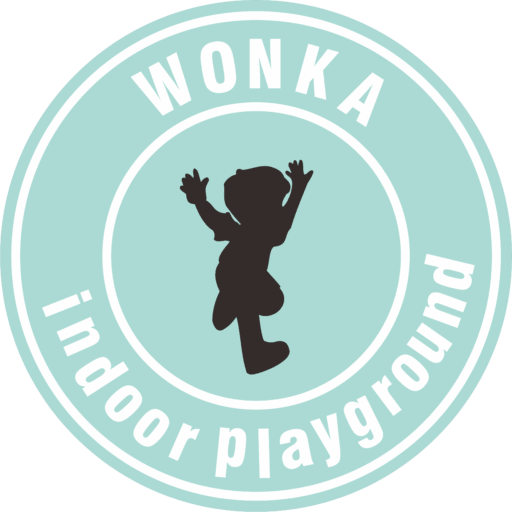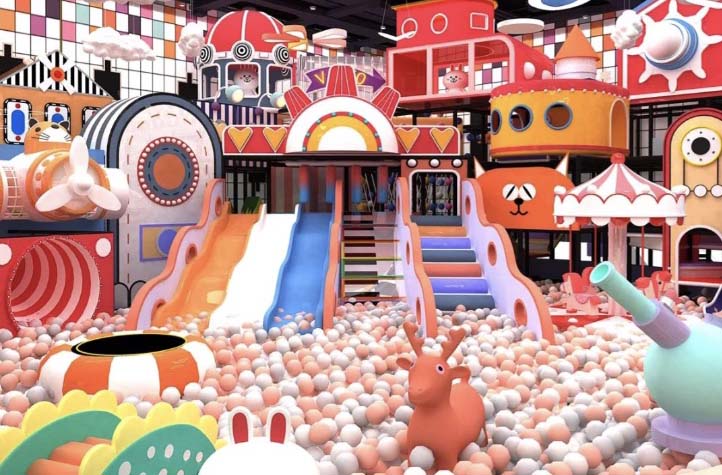Launching an indoor playground can be one of the most rewarding ventures for self-funded entrepreneurs. Whether you’re a first-time investor or planning to expand your business portfolio, a properly structured indoor playground can deliver strong cash flow, community goodwill, and even long-term brand potential—if planned and executed right.
This guide is designed to walk you through the complete process, from market research and budgeting to opening day operations and revenue management. All insights are based on real-world experience from global markets, and every section reflects the common challenges faced by private investors with limited resources.
1. Business Concept Overview
Every successful business starts with clarity. You don’t need a fancy brand or an expensive franchise—what you need is a solid idea that works in your local market.
Begin by defining:
- What age group will your playground serve? (e.g., 2–8 years old, or toddlers only?)
- Will it be focused on general free play, or specialized services like birthday parties and parent-child classes?
- Will your location be in a shopping mall, standalone facility, or part of a larger venue?
Example concept:
A 300-square-meter indoor soft play center targeting children aged 3–8, located in a suburban shopping complex with strong family foot traffic. Key offerings include free play zones, party packages, and weekday educational activities.
This clarity will influence your equipment choice, staffing plan, ticket pricing, and even opening hours.
2. Market Research: Real-World Intelligence
Don’t rely on theoretical data or expensive consultants—go out and observe. Talk to parents. Visit nearby competitors. Your local context is your most important data source.
Here’s how to do it effectively:
- Walk into existing indoor playgrounds on weekdays and weekends. Count visitors, observe staff operations, check ticket prices.
- Look at Google and Facebook reviews—what are parents complaining about? Cleanliness? Safety? Staff attitude? These are your opportunities.
- Identify the population of your target age group within 5 km of your site. How many kindergartens, schools, and family housing complexes are nearby?
- Check if competitors offer structured programs (like art classes or music time). If not, you can stand out by adding these.
- Most importantly: find out what gap exists in your area. You don’t need to be better than everyone—just better than what’s missing.
3. Site Selection: The Make-or-Break Decision
Choosing the right location is arguably the single most important decision in your entire business. A poor location means high marketing costs, low foot traffic, and a long return period—even with great equipment.
Look for these core features:
- High visibility: A storefront facing foot traffic (malls, plazas, near supermarkets)
- Accessible parking: Especially for family cars and strollers
- Minimum ceiling height: 3.2 meters for basic two-level structures, 4.5+ meters for more advanced designs
- Open floor layout: Fewer columns means more efficient equipment placement
- Existing utilities: Electricity, HVAC, and fire safety infrastructure in place
Don’t choose based on low rent alone. Often, high-rent locations generate 3–5x the revenue and result in faster payback.
4. Structuring Your Services: What Are You Really Selling?
You’re not just selling playtime—you’re selling safety, stimulation, convenience, and trust. Your service model needs to reflect what families actually value and pay for.
Here are the three most essential revenue components:
- Open Play Access – This is your bread and butter. Charge per hour, per visit, or via memberships. Make sure your layout has clear sight lines for parents, age-appropriate zones, and safety signage.
- Birthday Party Packages – These events can generate 3–5x the revenue of regular admission during the same time slot. Design a party area (even 20–30 m²) that can be decorated and reserved in advance. Offer basic to premium packages: decorations, cake, character mascots, and exclusive access.
- Value-Added Programs – Offer small group workshops, holiday events, or co-branded classes like parent-child yoga or storytelling sessions. These diversify your income and help attract repeat customers.
Don’t try to do everything. If you’re opening a 300–400 m² center, it’s better to focus on 2–3 service categories and do them exceptionally well than to stretch yourself thin across 10 half-baked offerings.
5. Startup Budget and Capital Breakdown (Realistic 2025 Figures)
In the indoor playground industry, it’s common to use a price-per-square-meter model to estimate equipment costs during early planning. However, it’s important to understand that this is only a rough budgeting tool. The final price is always based on the specific equipment design, the number and types of play elements, and any added complexity such as theming, interactivity, or multi-level structures.
For general planning purposes, standard two-level soft play equipment typically falls in the range of $95 to $120 USD per square meter, covering design and equipment manufacturing only. This price does not include shipping, local taxes, or on-site installation, which vary by country and supplier terms.
That said, two playgrounds of the same size—say, 300 m²—can differ in price by thousands of dollars depending on the layout and features selected. A basic layout with slides and climbing modules may be far more affordable than a themed, multi-level jungle adventure with motion-activated games and toddler zones.
Once your layout and business concept are clear, your supplier will prepare a customized quotation based on the actual equipment included—not simply the square footage.
For budgeting the rest of your investment:
- Renovation and Site Preparation: If the location already has electricity and flooring, minor upgrades like lighting, signage, and soft renovation usually range between $5,000–$8,000 USD.
- Licensing and Permits: These vary by country. Plan for $1,000–$2,500 USD to cover business registration, insurance, and any safety inspections.
- Marketing and Opening Campaigns: Budget around $2,000–$3,000 USD for signage, local influencer outreach, and launch events.
- Rent Deposit and Operational Float: Expect to pay 2–3 months’ rent upfront, plus $3,000–$5,000 USD for initial staff salaries, utilities, and stock.
🧠 Total startup budget estimate:
For a 300–400 m² indoor playground, a realistic investment range is between $50,000 and $65,000 USD, though high-end projects may exceed this depending on design ambition.
6. Team Structure and Daily Operations
You don’t need a large team, but you do need a reliable one. Here’s a lean, effective staffing model used in most successful centers:
- Manager (or Owner-Operator) – Handles scheduling, inventory, customer service, and basic bookkeeping.
- Play Area Supervisor – Ensures child safety, manages behavior, and keeps parents informed.
- Cashier/Receptionist – Manages tickets, memberships, and answers new customer inquiries.
- Cleaner/Maintenance – Keeps all surfaces and equipment sanitized, especially high-touch areas like ball pits and handrails.
Most centers operate 10am–8pm on weekdays and extend to 9pm on weekends. Weekend footfall can be 3–5x weekday traffic, so schedule part-time helpers or rotate shifts accordingly.
Use simple systems to start: Google Sheets for booking and expenses, Canva for flyers, and free POS tools like Square for payments. You can upgrade as your revenue grows.
7. Licensing, Compliance, and Safety Standards
Different countries and regions have different regulations, but one rule applies globally: when you serve children, you must meet basic safety and insurance standards.
Here’s how to approach compliance no matter where you’re located:
- Business Licensing: Register your playground as a legal business with your local commerce authority. Choose the correct category—some areas classify indoor playgrounds under “entertainment services,” others under “childcare facilities.”
- Fire Safety Approval: Most countries require fire extinguishers, clear exits, signage, and materials with fire-retardant certificates. If your space is in a mall, they may assist or mandate fire checks before you open.
- Insurance Coverage: Invest in commercial liability insurance. This protects you from accidents and gives parents peace of mind. If available, also secure coverage for indoor structures or leased equipment.
- Play Equipment Compliance: Make sure your equipment supplier (like you, the seller) provides CE, ASTM, or EN71 certification. These standards are widely accepted across Europe, North America, and the Middle East.
If you’re unsure of requirements, consult a local business consultant or speak directly with your landlord or mall management. In many cases, they already have procedures for soft-play centers and can guide you.
8. Pre-Opening Strategy: Building Momentum
You only open once. A strong pre-launch phase can define your entire first quarter’s revenue. Here’s how to maximize it:
- Soft Opening: Invite local families for a preview weekend with discounted tickets. Use this time to test operations, staff communication, and guest flow.
- Partnerships: Offer free trial access to nearby kindergartens, mommy groups, or parenting influencers. Their word-of-mouth is far more powerful than paid ads.
- Social Media Teasers: Begin sharing photos and construction updates weeks in advance. Run a giveaway for free annual passes to generate email sign-ups and local buzz.
- Walk-in Awareness: Use bold signage on-site. If you’re in a mall, collaborate with nearby tenants to cross-promote (e.g., “play here while mom shops”).
💡 Pro tip: On opening weekend, have someone record video testimonials from excited kids and parents. These clips will be powerful for future ads and website content.
9. Revenue Model and Payback Analysis
Let’s take a case: a 300 m² indoor playground, located in a shopping mall or retail zone with high family traffic.
Investment Overview:
Equipment cost: ~$35,000 USD
Total startup investment: ~$55,000–$60,000 USD
(Includes equipment, renovation, installation, permits, marketing, and 2–3 months’ rent deposit)
Here’s what matters to you as an independent investor: How fast can I make my money back?
Let’s assume:
- Average ticket price: $10 per child
- Average daily visitors (weekday): 20
- Average daily visitors (weekend): 100
- Monthly revenue projection:
- Weekdays: 22 days × 20 visitors × $10 = $4,400
- Weekends: 8 days × 100 visitors × $10 = $8000
- Total monthly gross: ~$11,000–$13,000
Monthly expenses (rent, staff, utilities, marketing): ~$5,000–$6,500
Net profit (conservative): ~$6,000–$7,500/month
🧠 Payback period:
If your startup cost is $60,000, and you’re netting $6,000/month, you’ll recover your investment in 10–12 months.
In prime locations with higher weekend traffic or strong birthday bookings, many operators recover investment in 6–9 months. The key is location + local demand + operational efficiency.
Note: Ticket prices and staff expenses may vary between countries and regions, but you can use this model as a reference to estimate.
10. Final Thoughts: What Sets Successful Owners Apart
Thousands of people start indoor playgrounds—but only the ones who think like operators, not just investors, succeed long-term.
Here’s what the successful ones do differently:
- They choose locations based on foot traffic, not rent price
- They invest in staff training and daily cleanliness
- They treat customer feedback seriously and make monthly improvements
- They build local relationships—with schools, influencers, and parents
- They run lean but smart, reinvesting profit into seasonal upgrades
If you follow a well-researched, customer-centric strategy, your indoor playground can be more than a fun space. It can become a stable, cash-generating business that supports your family and even scales into multiple locations.

